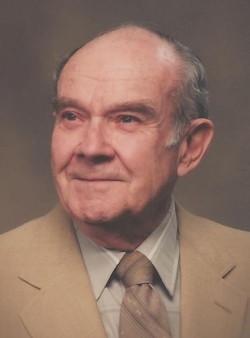 Influential coal researcher and Professor Emeritus William Spackman (1919-2014) died on March 13, 2014 in Wilmington, North Carolina. Spackman was well known for his work in the characterization of peat and coal deposits, and coal utilization. He spent his entire career at Penn State and was instrumental in the development of the coal research section of the College of Earth and Mineral Sciences in 1957. Under Spackman’s direction, the coal research section became an internationally acclaimed research facility and Penn State is still one of the few academic centers where there are formal education opportunities in coal. The coal research section was the precursor to the EMS Energy Institute, which was formed from 1993 through 1997 when several labs and centers were consolidated under the direction of Dean John Dutton.
Influential coal researcher and Professor Emeritus William Spackman (1919-2014) died on March 13, 2014 in Wilmington, North Carolina. Spackman was well known for his work in the characterization of peat and coal deposits, and coal utilization. He spent his entire career at Penn State and was instrumental in the development of the coal research section of the College of Earth and Mineral Sciences in 1957. Under Spackman’s direction, the coal research section became an internationally acclaimed research facility and Penn State is still one of the few academic centers where there are formal education opportunities in coal. The coal research section was the precursor to the EMS Energy Institute, which was formed from 1993 through 1997 when several labs and centers were consolidated under the direction of Dean John Dutton.
Spackman also worked to start the Penn State Coal Sample Bank in 1967 to supply the research community with a variety of coal samples organized by rank and composition. The sample bank, which is housed at the EMS Energy Institute, is among the largest sample bank in the World with over 1,000 samples of coal and accompanying analytical data. Recently, the EMS Energy Institute expanded this collection even further with the addition of the Argonne Premium Coal Sample Bank.
Spackman received an associate of arts degree in 1940 from North Park College in Chicago. Then in 1942, he graduated with a bachelor’s degree in botany from the University of Illinois. During World War II he served at the Philadelphia Naval Shipyard applying biological research to marine wood preservation. In 1949 he earned his doctorate in biology with a major in paleobotany from Harvard University.
Best known for his work in petrography, Spackman’s research efforts ranged from defining the petrographic characteristics of coking coals, to understanding the association of uranium minerals with lignites, to exploring the historical development of peat deposits within the Okefenokee Swamp and the Everglades. In addition to the above accomplishments, Spackman helped to establish the Catalog of Fossil Spores and Pollen. He served as chair of the Paleobotanical Section of the Botanical Society of America; chair of the Coal Geology Division of the Geological Society of America; and member of the International Commission of Coal Petrology, serving from 1964 to 1975 as president of its Nomenclature Committee. In 1980 he became the founding editor of the first research journal devoted to coal geology, the International Journal of Coal Geology.
Written with information from: Rich, F.J., et al., Obituary for Dr. William Spackman (1919–2014), Int. J. Coal Geol. (2014), http://dx.doi.org/10.1016/j.coal.2014.04.002

